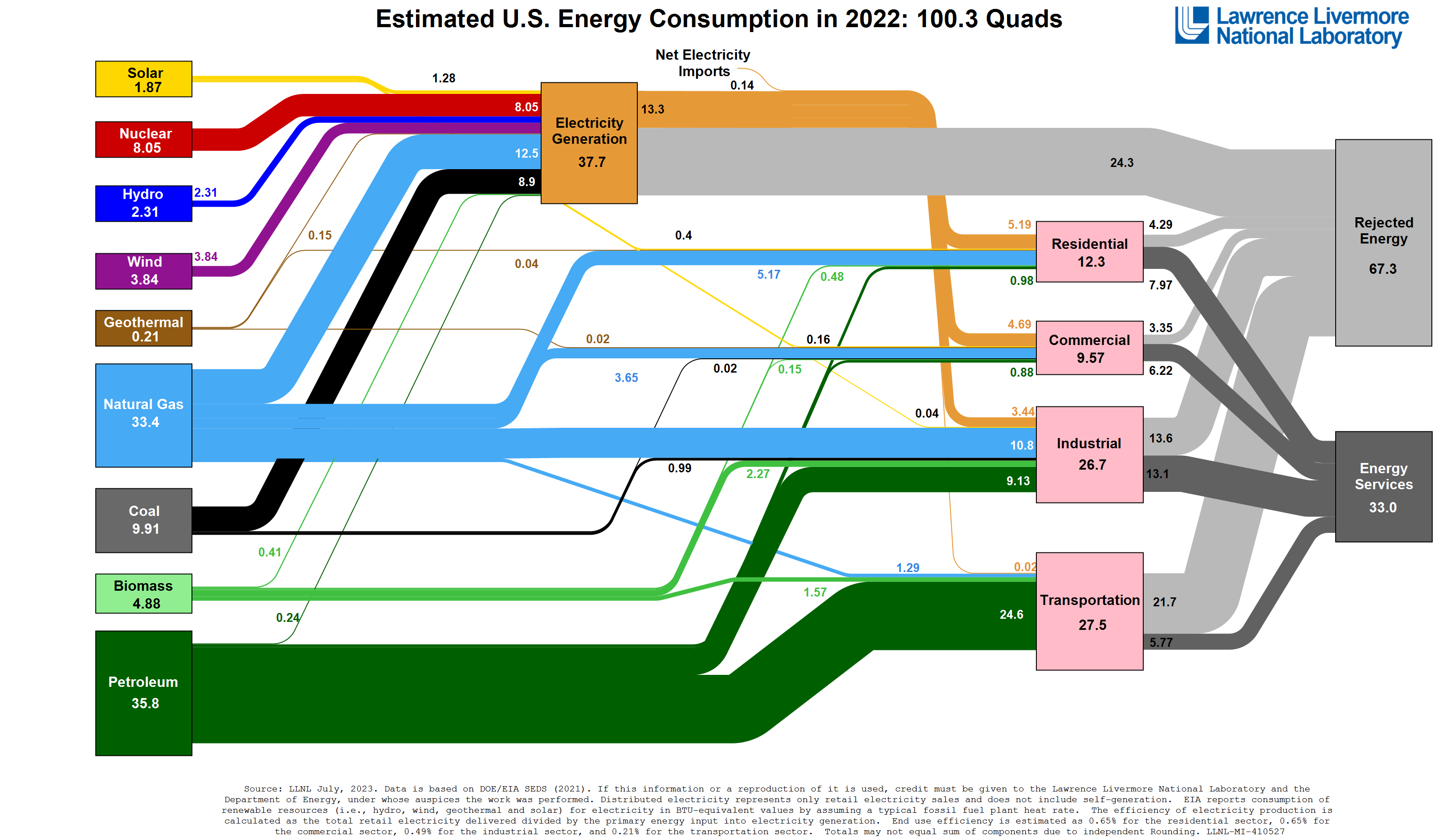This shows the whole energy picture for 2022. Open it up in a new window, or, better yet, download it and look at it in some sort of “viewer” so you can look at it in detail.
https://flowcharts.llnl.gov/

Check out the gray mass, labeled “Rejected Energy” (upper right) this is wasted energy, and accounts for slightly more than ⅔’s of the "primary energy.” When you drive a fossil-fueled automobile, part of the energy in the fuel goes to moving the vehicle, part of it is lost to friction in the drivetrain, part of it to fighting wind resistance, most of it is lost in the form of heat from combustion. (Decades ago, I read that the average car radiator puts out enough heat to heat the average house. Cars have become more efficient since then, but not that much more efficient.)
Look at the “Transportation" sector of the flowchart (lower right.) Of 27.5 “Quads” (quadrillion BTU’s) flowing into “transportation” 21.7 is wasted. That’s more than ¾’s! Wasted! The same is largely true for fossil-fuel driven generation of electricity. An old coal-fired power plant is about ⅓ efficient. (⅔’s of the primary energy in the coal is wasted.) A newer gas-fired plant is about 45% efficient, wasting a little more than ½ the "primary energy." (EIA: More than 60% of energy used for electricity generation is lost in conversion.)
Energy from renewables can also be “rejected." What if solar panels or wind turbines are producing more electricity than is required at the moment? That excess electricity is lost, unless it is stored somehow — perhaps in a battery of some sort.
What does it mean that we waste ⅔’s of our “primary energy?” It means that if we could change our energy system to make it 100% efficient, not that we can, but, if we could, we wouldn't need to replace the full 100.3 “Quads" of “primary energy,” just about ⅓ of it!
Now, as I said, we cannot create a 100% efficient system (batteries for example are not 100% efficient, they give off heat when charging and discharging.) However, replacing horribly inefficient coal fired power plants with much more efficient photovoltaics with battery storage would require much less "primary energy” than our present system.

